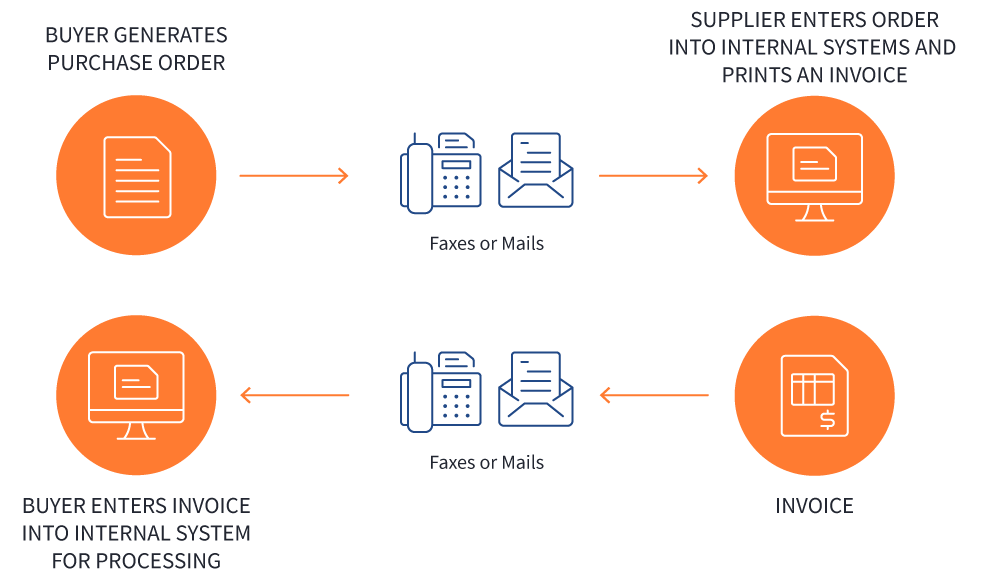What is EDI (Electronic Data Interchange)?
Electronic Data Interchange (EDI) is the computer-to-computer exchange of business documents in a standard electronic format between business partners.
Switching from paper-based processes to EDI offers significant benefits, including:
- Reduced costs
- Faster processing times
- Fewer errors
- Stronger business relationships
Computer-to-computer communication
EDI replaces traditional methods like postal mail, fax, and email. While email is electronic, it still requires human intervention to process documents and input them into various systems. This manual handling slows things down and introduces errors. Leveraging an EDI process, documents are sent directly into an Order Management System for example, where the order can be immediately accessed and for immediate access and management without retyping the data.
Manual process: Involves paper, people, and delays.
EDI process: Fully automated — no paper, no people, faster results.
Who uses EDI?
EDI is used across a wide range of industries including retail, manufacturing, healthcare, logistics, automotive, and finance. It supports the seamless exchange of critical business documents between business partners (also called trading partners) to streamline both order-to-cash (O2C) and procure-to-pay (P2P) processes.
By leveraging EDI automation, businesses can enhance efficiency, reduce cycle times, and improve data accuracy across complex supply chains and service networks.
Common business documents exchanged via EDI
EDI is used to exchange many types of business documents, each with a specific EDI X12 transaction set code, such as:
- Purchase Orders (EDI 850): Used to place orders for goods or services.
- Invoices (EDI 810): Sent by a seller to request payment for delivered goods or services.
- Advance Ship Notices (ASNs) (EDI 856): Details the contents of a shipment before arrival.
- Bills of Lading (EDI 211): Provides shipping and carrier information for freight handling.
- Customs Documents (EDI 309, 310, 315): Used for customs filing and transportation reporting (e.g., cargo manifest, freight receipt, status details).
- Inventory Reports (EDI 846): Communicates inventory levels, availability, and movement.
- Shipping Status Updates (EDI 214): Provides updates on the status of a shipment in transit.
- Payment Instructions (EDI 820): Details payment transactions such as remittance advice or fund transfers.
View a comprehensive list of EDI document standards →
Standardized format
To ensure accurate computer processing, EDI uses standardized formats. These standards define the structure and type of each data element (e.g., date formats, numeric values).
Without a shared standard, systems would not be able to understand each other—much like how someone who speaks only English might not understand Japanese.
Popular EDI standards include:
- ANSI X12
- EDIFACT
- TRADACOMS
- EbXML
Each standard has multiple versions (e.g., ANSI 5010, EDIFACT D12A). Business partners must agree on both the standard and version before exchanging documents.
EDI Translators—either in-house software or third-party services—convert these standardized documents into internal formats usable by business applications.
Contact an EDI expert to explore on-premises and cloud-based EDI translator options →
Managing EDI complexity
If you’re already using EDI, it’s possible to have too much of a good thing. Originally intended to simplify the exchange of business documents, EDI has evolved into a complex landscape of varying document types, standards, versions, protocols, and regulatory requirements. As a result, many organizations now manage multiple EDI systems and vendors just to keep up.
If this sounds familiar, read on to learn about the benefits and risks of EDI vendor consolidation.


